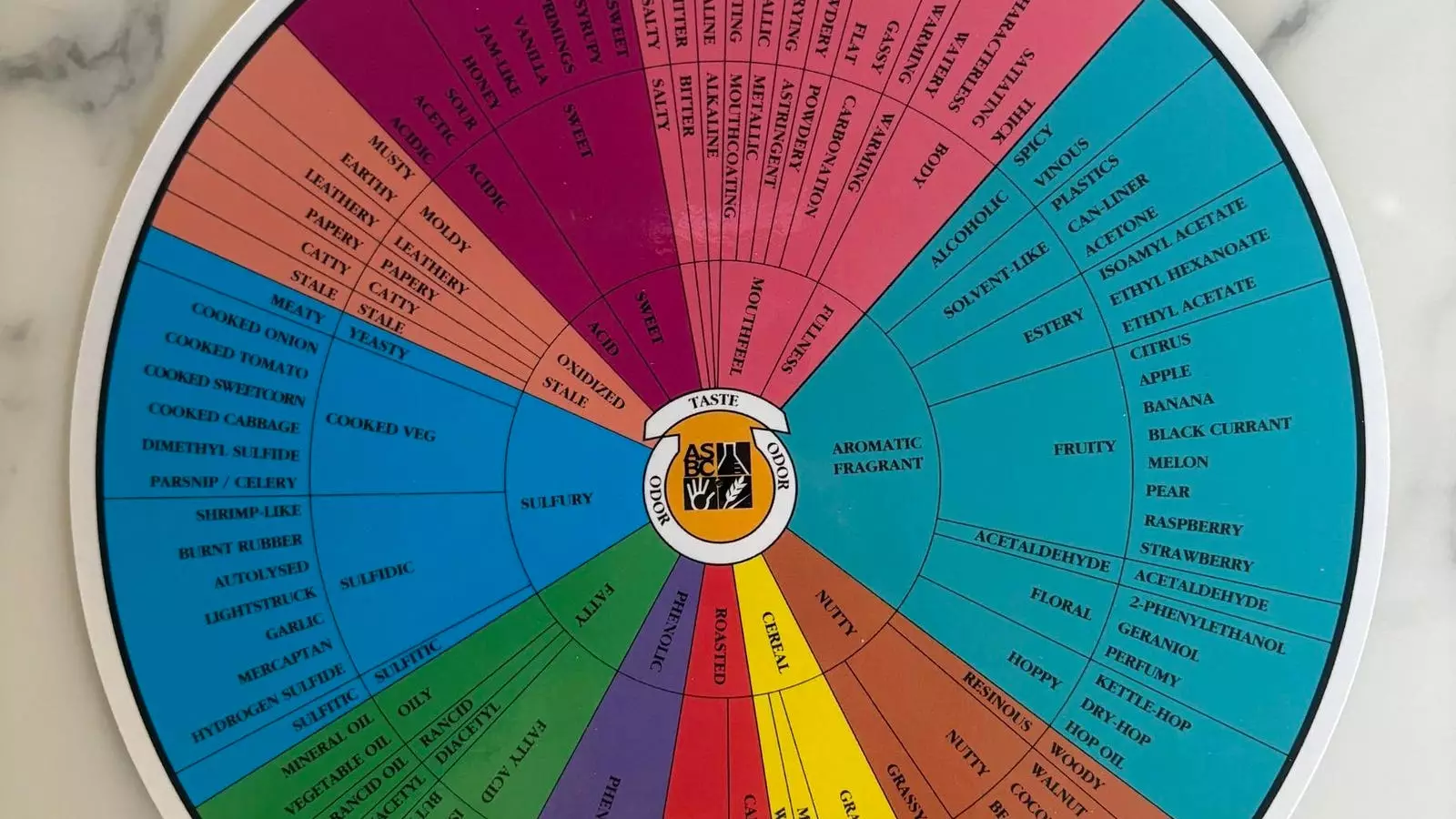In the intricate universe of beer appreciation, aroma plays an indispensable role that transcends individual preferences. Jen Blair, a respected figure in the American brewing community, is on a mission to illuminate the importance of smell in the brewing process through her innovative venture, “Aroma: Explore The Wheel.” In this engaging online seminar series, she invites not only industry professionals but also beer enthusiasts and novices alike to delve into the aromatic dimension of beer. By focusing primarily on the olfactory spectrum of beer, the program aims to enhance participants’ appreciation for the subtleties present in their favorite brews.
The significance of aroma extends beyond mere enjoyment; it is a critical component in identifying potential flaws within beer. Ingredients such as yeast, malt, and hops each contribute their own unique characteristics, which can inform drinkers about the quality, style, and craftsmanship behind a specific brew. Blair considers that honing one’s sense of smell is akin to developing a muscle; the more one practices, the more adept one becomes at discerning complex aromas and flavors.
Blair’s innovative webinar structure effectively combines theory with practical engagement. Each session focuses on a distinct category related to beer flavor wheels and aroma maps, showcasing a carousel of unique aroma vials for participants. This hands-on approach encourages individuals to blind smell each vial, attempting to identify the contained aroma before discussing their findings as a group. This moment of community inquiry not only solidifies knowledge but fosters dialogue around the often subjective nature of scent recognition.
Such an experience is not only educational but also empowering, allowing participants to confront the complexities of aroma. According to Blair, many craft beer lovers may think they can differentiate between various fruity notes—yet when presented with unlabeled samples, their confidence may falter. This is a crucial learning opportunity, demonstrating that perception can vary significantly among individuals. Therefore, training the olfactory senses becomes an essential endeavor for seasoned beer drinkers and newcomers alike.
The importance of developing a robust vocabulary to describe aromas cannot be overstated. Blair emphasizes that while many beer aficionados may describe a beer as “fruity,” the term lacks nuance without specific descriptors. “Fruity” could signify a myriad of scents, from mango to navel orange, cultivating potential miscommunication between drinkers. Through concentrated exploration of specific categories—such as tropical, citrus, and stone fruits—participants become equipped with a vocabulary that enables more precise discourse about their beer experiences.
The sessions are not only workouts for the nose but also foster a greater appreciation of the craft behind each brew. Blair likens this to physical training; the more one engages in olfactory exercises, the sharper one’s senses become. Recognizing genetics’ minor role, she emphasizes that repetition and mindfulness form the cornerstone of creating a well-tuned palate.
For those eager to enhance their sensory skills outside the classroom, Blair recommends a select list of literature that can further refine one’s taste and smell at home. From books like “Flavorama” by Arielle Johnson to “Nose Dive” by Harold McGee, aspiring aficionados have a wealth of resources at their disposal. Furthermore, sensory training doesn’t require elaborate setups or expensive kits—most individuals possess an ideal training environment within their own kitchens.
Blair advocates for the simple yet effective practice of engaging with accessible resources such as spice racks, pantries, and even the refrigerator. By actively comparing various spices or analyzing the distinct fragrances of different fruits and vegetables, individuals can sharpen their senses in an enjoyable and convenient manner. Recently, a sensory panel composed entirely of different peppercorns helped illustrate the concept that diverse and exciting flavors await exploration.
As the craft beer industry evolves, so too does the movement towards sensory training. Blair’s “Aroma: Explore The Wheel” exemplifies how innovative approaches can cultivate deeper connections between consumers and their selected brews. The ability to identify and describe aromas heralds a more profound understanding of what makes each beer unique.
For anyone interested in elevating their beer tasting experience, focusing on aroma is a fundamental pathway. By participating in webinars like Blair’s and integrating sensory exercises into everyday life, individuals can appreciate the vast world of beer flavors with newfound clarity. In exploring and training the sense of smell, beer enthusiasts not only enrich their own experiences but contribute to the broader conversation surrounding craftsmanship and quality in the beer world.


Leave a Reply